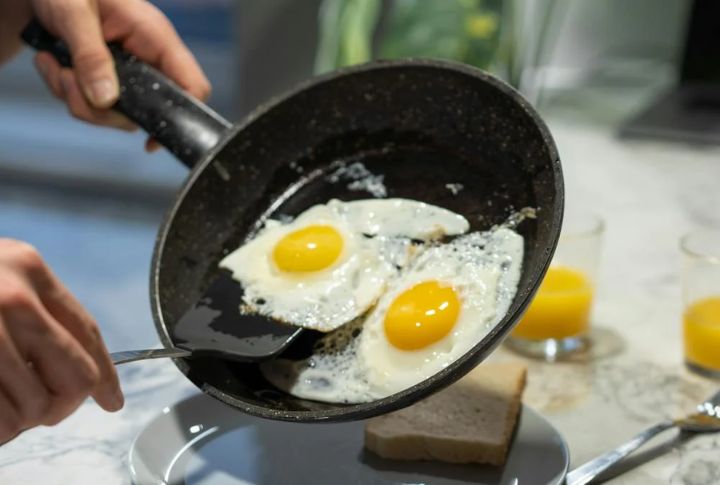
Eggs test your timing like nothing else. One wrong move, and that golden yolk turns into a sticky mess. Still, most mistakes come down to technique, not talent. Learning what to avoid makes all the difference. So, let’s walk through ten specific habits that could be standing between you and a smooth, satisfying flip.
Choosing The Wrong Egg Type For Frying
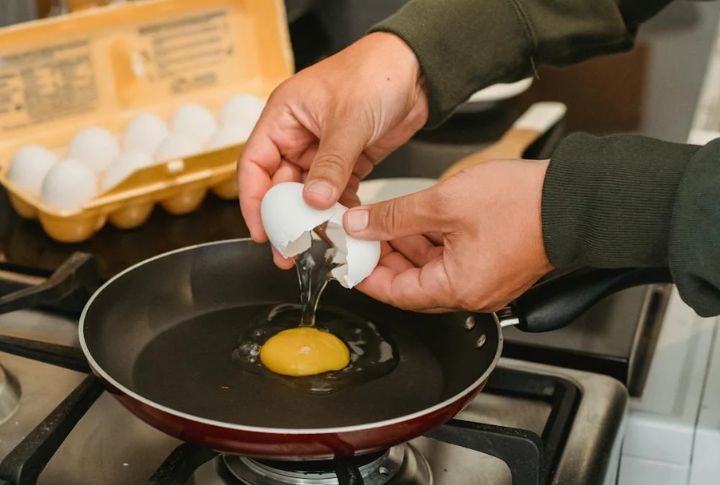
Extra-large eggs spread too thin and cook unevenly, making flips harder to control. Double yolks increase the risk of breakage. Stick to standard large eggs; they set consistently and hold their shape better during flipping. Uniform size helps with timing, pan space, and overall flip success.
Cooking On A Dirty Or Overused Surface
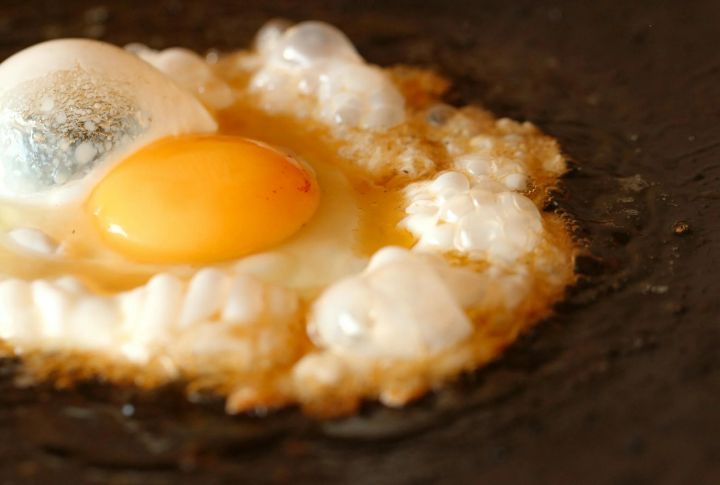
Pan residue from previous meals causes sticking and interferes with clean contact. Nonstick coatings lose effectiveness on grimy surfaces. For a reliable flip, wipe or rinse the pan before cooking. A clean surface improves control and keeps eggs intact during movement.
Using A Pan That Is Too Lightweight

Thin pans drop in temperature when eggs hit the surface. This leads to uneven whites and soft spots that break during the flip. Use a heavier pan like cast iron or triple-layer nonstick. Stable heat retention ensures proper setting and gives the egg structural strength.
Rushing The Oil Or Butter Heating Process
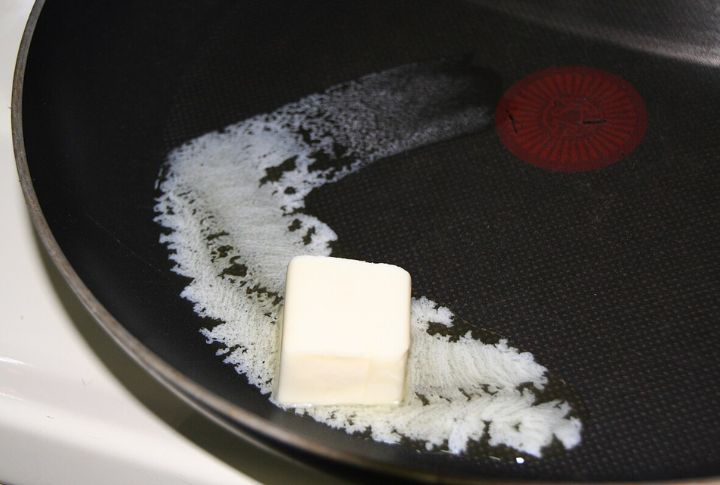
Cold oil or butter causes the egg to stick immediately. Eggs should hit fully heated fat—oil should shimmer, and butter should foam. Waiting a few extra seconds prevents damage. Properly heated fat creates a barrier between the egg and pan, allowing a cleaner flip.
Flipping Without Checking The Edges First

Egg whites need to be fully set at the edges before flipping. If the spatula meets resistance or sticks at the sides, the egg will likely tear. Test the edges gently before committing. Proper edge release is a key indicator that the egg is ready.
Letting The Yolk Set Before Flipping
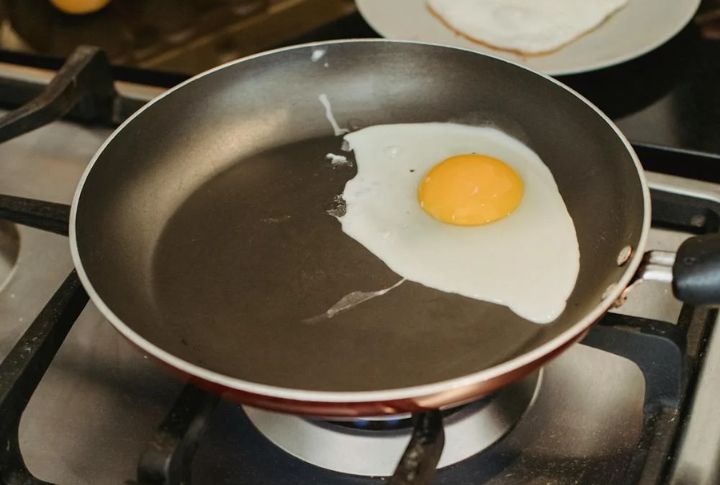
Do not wait too long because it will harden the yolk, eliminating the soft center. For over-easy or medium eggs, flip while the yolk still jiggles slightly. Once it starts firming, the texture is lost. Yolk doneness changes fast—timing needs to be exact to avoid overcooking.
Using One Hand Instead Of Two
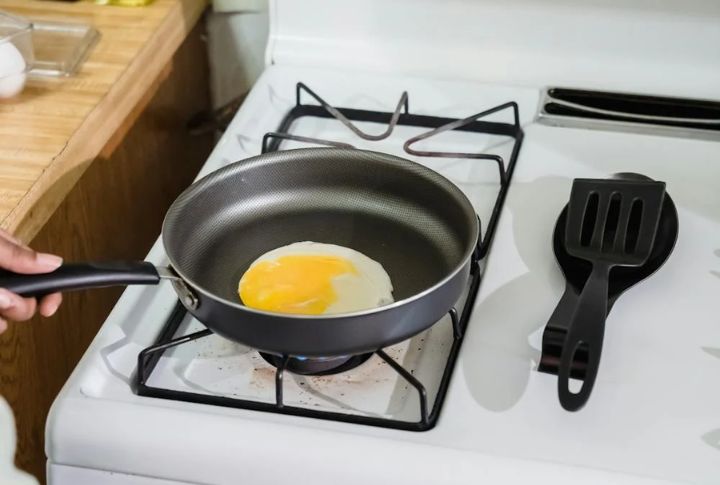
Flip with one hand, and you lose control. Hold the pan steady and move the spatula with your other hand. Without support, the egg slips or breaks apart. Use both hands to stay balanced and move the egg cleanly from pan to plate.
Sliding The Spatula Too Abruptly
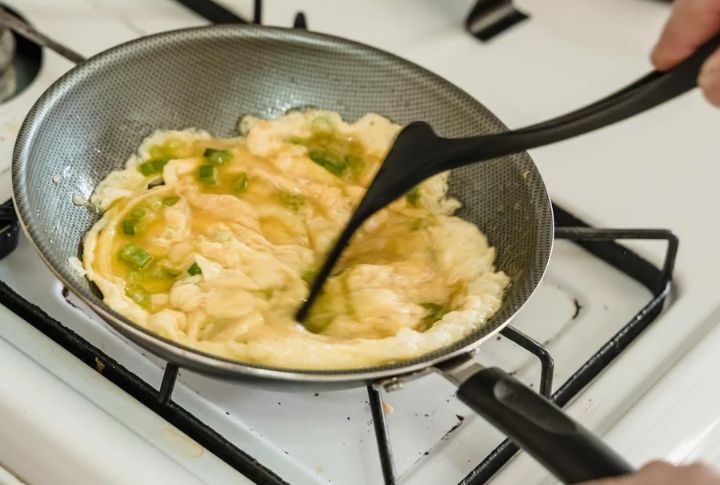
Jamming the spatula in too quickly can tear the egg white or fold it awkwardly. Instead, slide it in gently at a shallow angle. Let the edge of the spatula lift the egg slightly before moving further underneath. This controlled approach reduces resistance and helps maintain the egg’s shape during the flip.
Not Practicing On Lower-Stakes Foods

Eggs are fragile and unforgiving. Practice flipping with foods like pancakes or tortillas to build skill. These foods allow you to learn timing and spatula control without frequent breakage. Skill transfer is direct—better flips with simpler items lead to more consistent results with eggs.
Flipping With The Wrong Wrist Motion
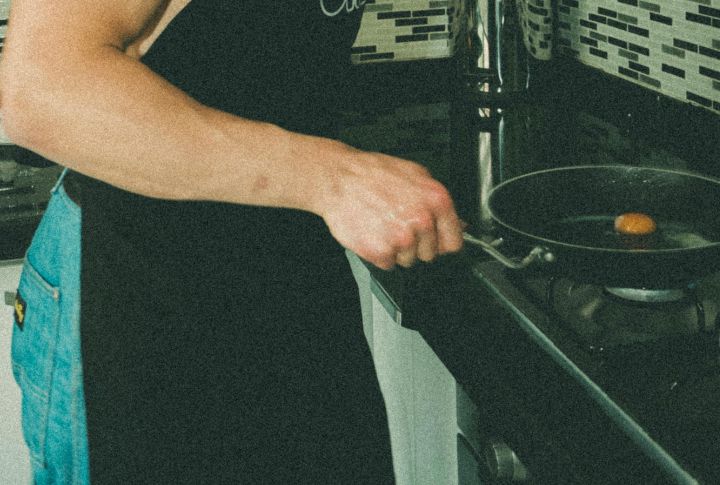
Poor wrist movement during the flip causes jerky transitions, leading to folded whites or broken yolks. Flipping requires a smooth, forward-and-over arc, not a sharp toss or a flat lift. Practicing controlled, wrist-led motion gives you consistency and minimizes structural damage during the flip.
Leave a comment